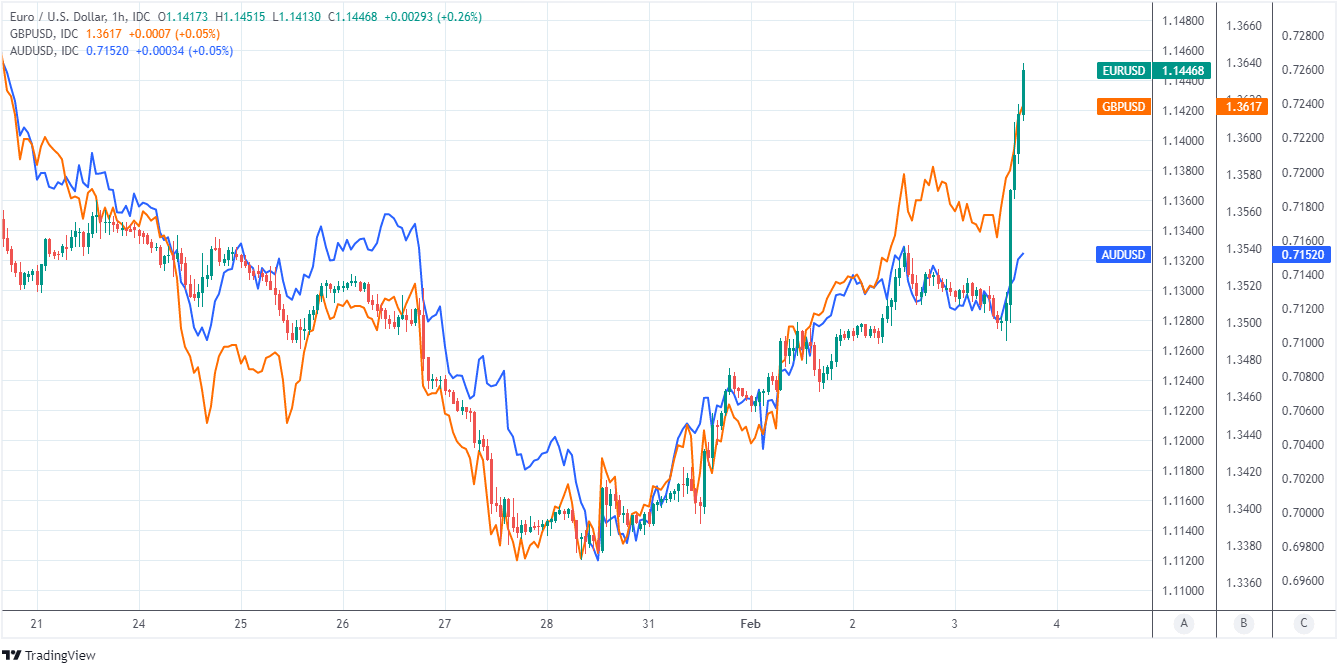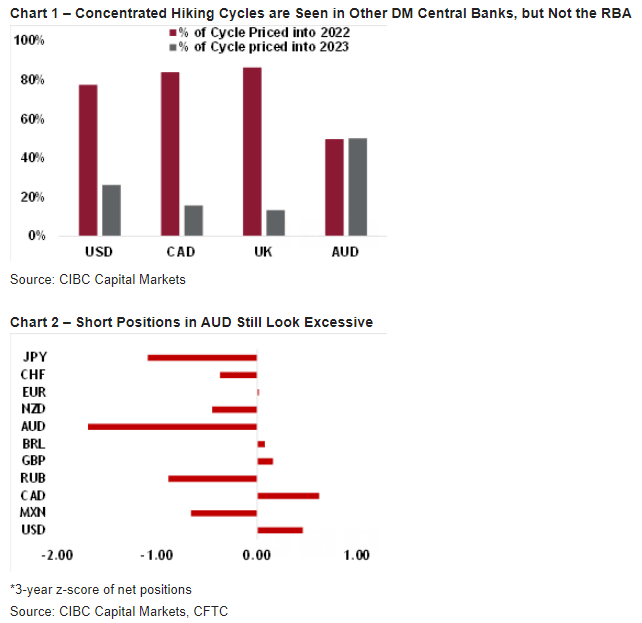U.S. Dollar Correction Looms
- Written by: James Skinner
-
- USD in broad decline after ECB
- EUR/USD sellers seen squeezed up ahead
- May weigh on other USD rates short-term

Image © Adobe Images
February’s European Central Bank (ECB) monetary policy decision appeared to trigger an extended 'short squeeze' in EUR/USD that could lead other currencies to also rise against the U.S. Dollar during the weeks ahead, according to some strategists.
Dollars were sold widely while most other major currencies were bought with the largest gains accruing to the Euro, Norwegian Krone, Swedish Krona and Polish Zloty after President Christine Lagarde warned of upside risks to the ECB’s inflation outlook.
“President Lagarde also refrained from calling a potential hike in rates this year “unlikely”, which is less explicit than at previous meetings. A shift towards faster tightening by the ECB would provide a more positive backdrop for the EUR, although more explicit guidance might not be forthcoming until the March meeting and forecast round,” says Dominic Bunning, European head of FX research at HSBC.
- EUR/USD reference rates at publication:
Spot: 1.1456 - High street bank rates (indicative band): 1.1055-1.1135
- Payment specialist rates (indicative band): 1.1353-1.1340
- Find out more about market-beating rates and service, here
- Set up an exchange rate alert, here
The Euro-Dollar rate had rallied into the ECB decision following the release of January’s Eurozone inflation figures in the midweek session, which surprised sharply on the upside of economists’ expectations and also appeared to defy the ECB’s anticipation that price pressures would peak around the turn of the year.
While stopping short of endorsing market speculation that the ECB might be likely to lift its interest rate toward the end of the year, President Lagarde acknowledged on Thursday that January’s data could mean that Eurozone inflation remains elevated for longer than was previously anticipated.
“The ECB press conference was VERY hawkish and signals a turning of the tide. Extant EUR/USD shorts are going to get squeezed, and that should pass through to other FX pairs. So why AUD? Put simply, it’s the most crowded short out there. That’s largely due to the fact that market pricing for the RBA is also the most conservative relative to the other central banks,” says Bipan Rai, North American head of FX strategy at CIBC Capital Markets.
Source: CIBC Capital Markets.
Secure a retail exchange rate that is between 3-5% stronger than offered by leading banks, learn more.
The Euro had been among the most heavily sold major currencies last year due in part to the ECB’s assessment that Eurozone inflation pressures would be unlikely to require a change in interest rates in order for them to return to the bank’s symmetric two percent target over the coming years.
But with the ECB’s inflation outlook shifting some economists are already revising their forecasts in favour an interest rate rise that could come as soon as September 2022, which is a potential catalyst for a further squeeze on investors and traders who spent much of the six months leading up to the new year betting against the European single currency.
“Today's meeting was not even remotely balanced, it was hawkish. The doves have thrown the towel. We change our ECB call: we now expect two deposit rate hikes in September and December 2022, each of 25bp (the second with a 25bp refi rate move), and hence back to zero,” says Ruben Segura-Cayuela , a Europe economist at BofA Global Research.

Above: Euro Dollar rate shown at hourly intervals alongside GBP/USD and AUD/USD.





